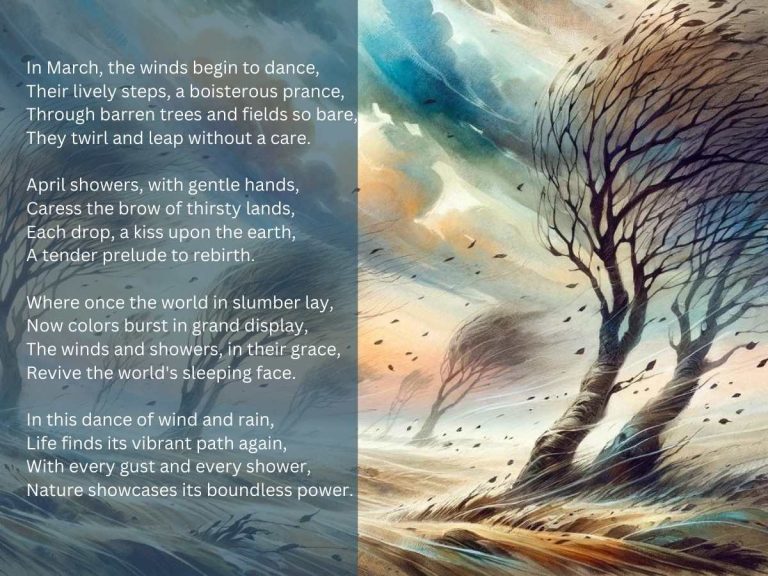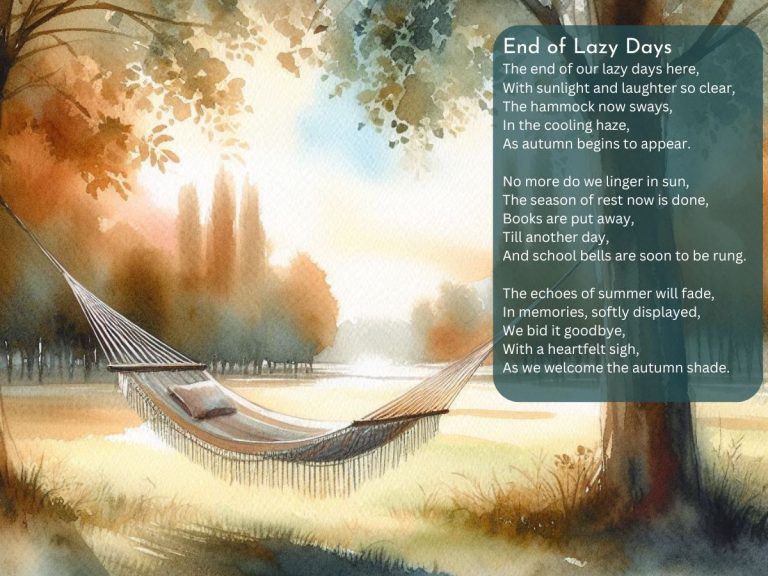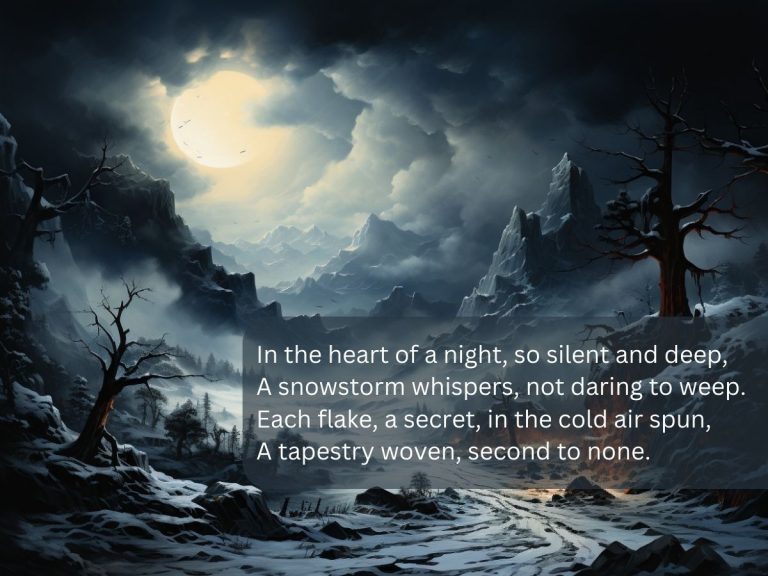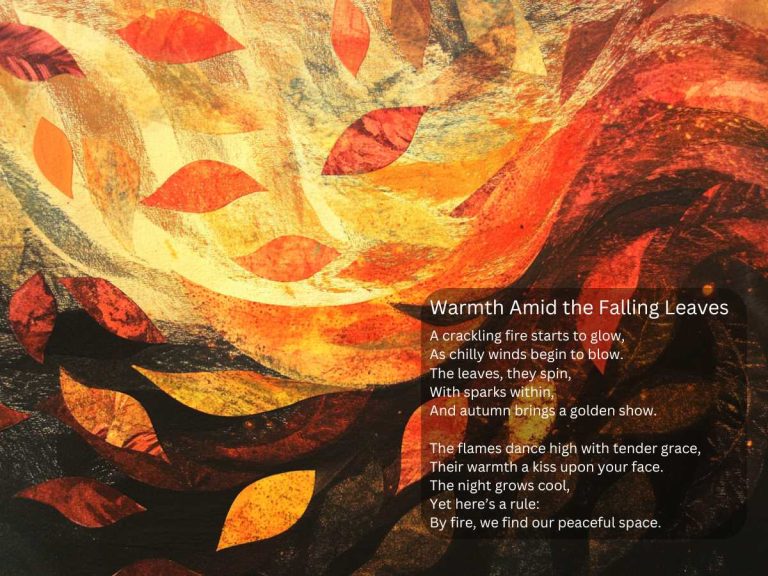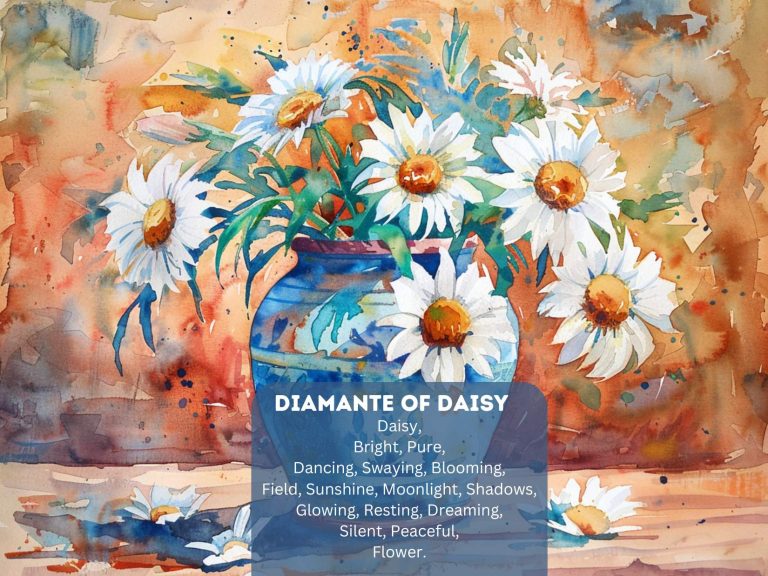5 Beautiful Garden Poems
Table of Contents
Garden’s Serenade
Beneath the sun's gentle gaze,
Plants stretch up in quiet praise.
Leaves rustle with stories old,
In shades of green, bold and bold.
Flowers bloom with tender care,
Colors dance in the soft air.
Butterflies in graceful flight,
Find solace in petals bright.
Bees hum tunes of life's sweet nectar,
In this garden, a serene sector.
Shadows play on the earth below,
As day gives way to twilight's glow.
A sanctuary, peaceful, mild,
Nature's canvas, art so wild.
Each stem, a brush; each hue, a stroke,
In this garden, life awoke.
Here, amidst the bloom and leaf,
Serenity counters grief.
A garden's gift, so pure, so kind,
A tranquil refuge for the mind.
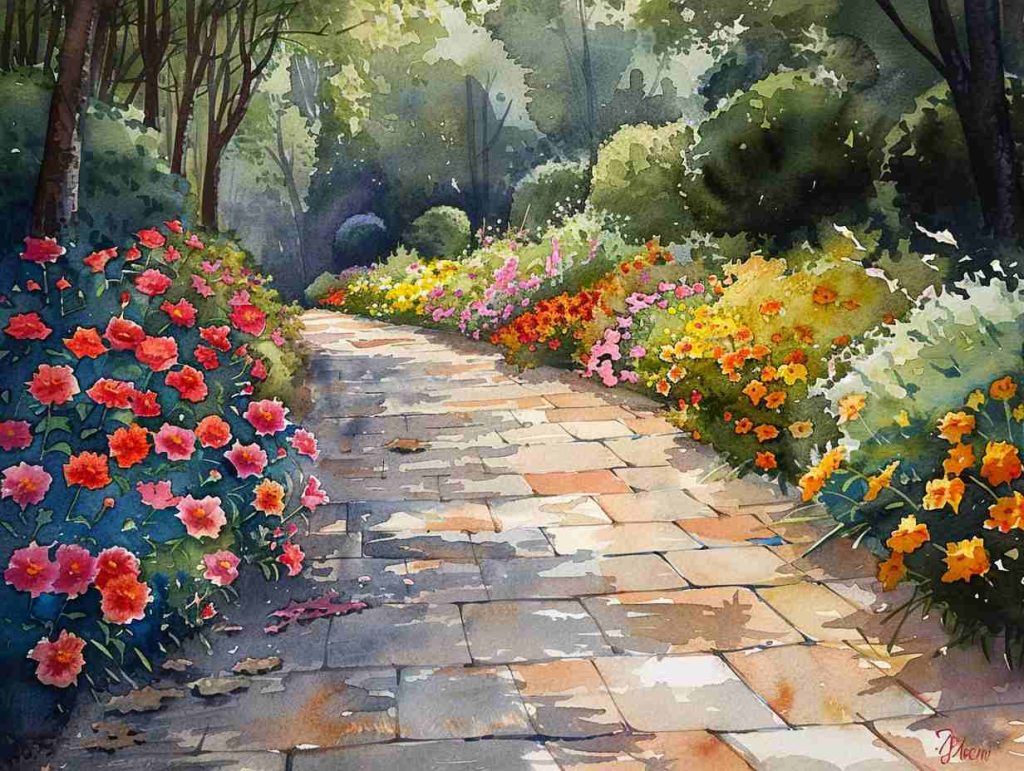
Meaning
“Garden’s Serenade” is a tribute to the serene beauty and vibrant life within a garden. It portrays the garden as a sanctuary where plants, flowers, and wildlife coexist harmoniously under the sun’s gentle watch. The poem emphasizes the garden’s role as a source of peace and inspiration, a place where nature’s artistry is displayed through the dance of colors, the flight of butterflies, and the hum of bees. It suggests that amidst the chaos of the world, a garden remains a tranquil refuge for the soul, offering solace and a reminder of life’s simple pleasures.
Inspiration Behind
I was sitting in my own garden, watching the sun play hide and seek with the leaves, when the idea struck. Each verse came to life as I observed the butterflies, the buzzing bees, and the way the light changed the colors of the flowers. It felt like the garden was sharing its secrets with me, in a language only felt, not heard. I wanted to capture that sense of peace, that moment of connection with nature. The poem is my attempt to bottle up that tranquility and share it with others, to remind us all of the quiet joys that a garden holds.
In the Garden’s Grasp
Morning light spills,
over dew-kissed leaves,
a silent symphony of greens,
unfurling, reaching, living.
Air, fresh with the scent of soil,
carries the promise of growth,
of life, interwoven,
in the weave of roots and earth.
Butterflies, flit on invisible threads,
between flowers,
their dance, a delicate balance,
of beauty and survival.
The sun climbs, shadows retreat,
each plant, each petal,
bathed in a glow,
unique, yet unified in this space.
Here, time moves differently,
measured in blooms, not hours,
a continuum of birth, growth, decay,
and again, the cycle, unending.
In this garden,
everything has its place,
the chaos of existence,
tamed into harmony.
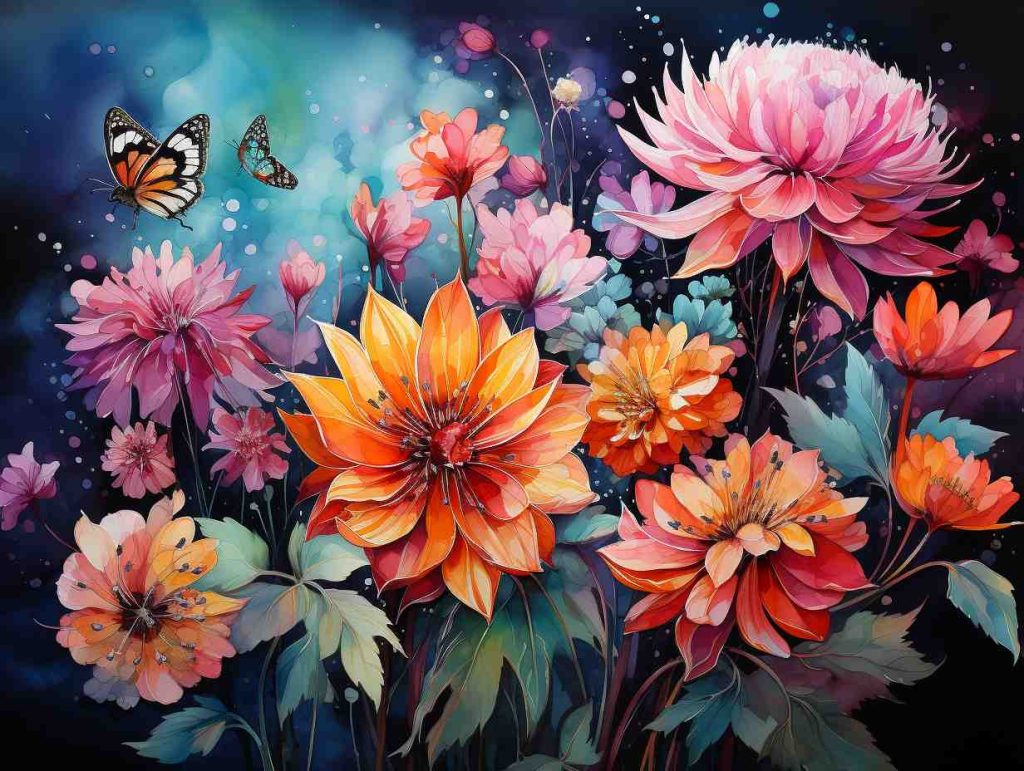
Meaning
“In the Garden’s Grasp” tells the serene yet ever-evolving essence of a garden in free verse, capturing the intricate balance of life within. It paints a vivid picture of the garden at dawn, bathed in morning light and teeming with the promise of new growth. The poem emphasizes the interconnectedness of all elements within the garden, from the smallest insect to the tallest plant, and how each contributes to the cycle of life. It reflects on the unique passage of time in a garden, marked by natural processes rather than conventional measures, highlighting the continuous loop of birth, growth, and decay. This poem invites readers to see the garden not just as a space of beauty, but as a microcosm of life’s complexity and harmony.

Inspiration Behind
I was inspired by an early morning walk through a garden, noticing how the first light touched each leaf and petal. It struck me how each element, from the tiniest droplet of dew to the broadest leaf, played a vital part in the garden’s ecosystem. Observing the butterflies navigating through the air, I was reminded of the delicate balance of life. The garden felt like a world apart, where the usual markers of time faded away, replaced by the natural rhythms of growth and change. This poem is my attempt to capture that moment of connection, to express the feeling of being entirely present in the natural world, where every detail contributes to a greater harmony.
Garden Bloom
Garden
Vivid, alive
Growing, blooming, soothing
Nature's palette in full display
Retreat

Meaning
“Garden Bloom” is a cinquain poem that captures the essence of a garden in its prime. The poem emphasizes the garden as a vibrant and living space, characterized by its continuous growth, blooming flowers, and the calming effect it has on visitors. It highlights the garden as a retreat, a place where one can immerse themselves in the beauty of nature and find solace. Through its concise structure, the poem conveys the transformation and vitality of a garden, inviting readers to visualize nature’s artistry and the peace it brings.

Analysis of the Structure
The poem “Garden Bloom” is a cinquain because it adheres to the specific structure and format that define a cinquain poem. A cinquain is a five-line poem that employs a specific syllable count for each line or, in some variations, specific word counts and parts of speech. The traditional cinquain follows a syllable pattern of 2-4-6-8-2, offering a concise yet expressive way to convey an image or emotion.
“Garden Bloom” fits this structure as it presents a snapshot of a garden’s essence in five lines, each contributing to a vivid, compact depiction of its subject. The poem uses a mix of descriptive adjectives, actions, and a final noun to bring the garden’s vitality and serenity to life, aligning with the cinquain’s goal of creating a strong image or emotion with economy of words. While the original cinquain format focuses on syllable count, “Garden Bloom” captures the spirit of the cinquain through its brevity and focused imagery, making it a modern interpretation of this poetic form.
Inspiration Behind
As I walked through a garden one afternoon, I was struck by the contrast of colors and the harmony of nature’s design. The way each flower bloomed, each leaf fluttered in the breeze, it was like watching a silent symphony. This garden was more than just a space; it was a sanctuary, a place where the bustle of the world faded into the background. I wanted to capture that feeling, that moment of pure contentment, in the most succinct way possible. A cinquain felt right, with its structured brevity, to distill the essence of the garden into a few, potent lines.
Garden Diamante
Garden
Lush, serene
Growing, blooming, soothing
Sanctuary, oasis, haven, retreat
Reading, relaxing, dreaming
Peaceful, tranquil
Eden
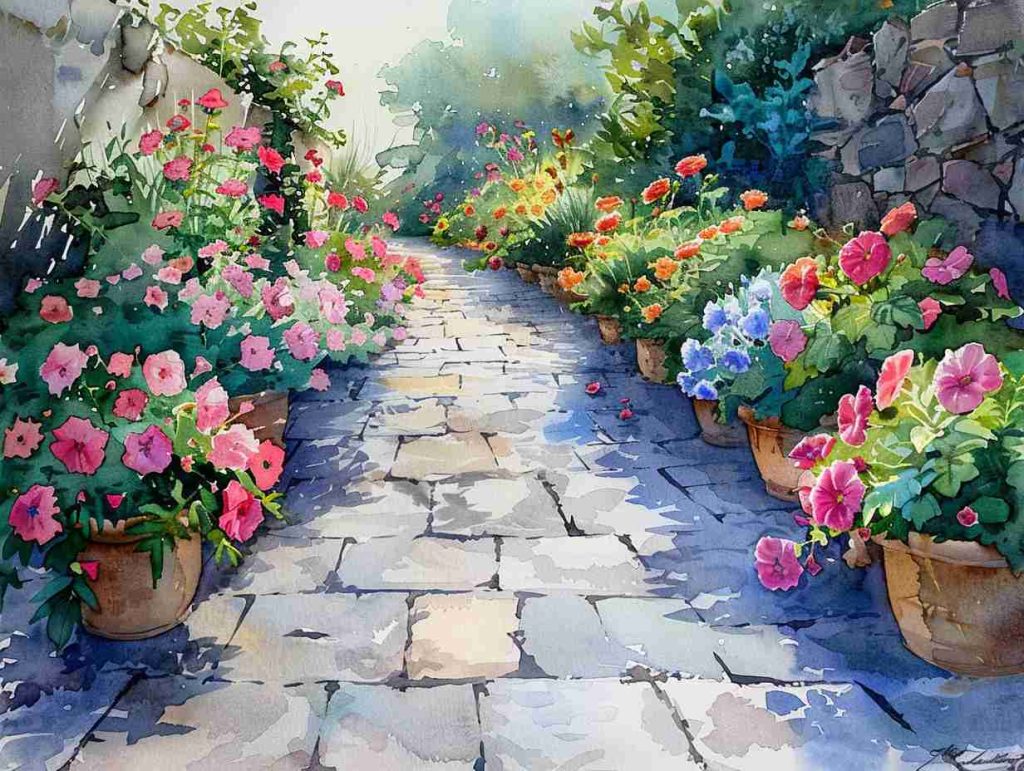
Meaning
This diamante poem contrasts the vibrant, active life within a garden with the peaceful, contemplative experience it offers to those who visit. It begins with the garden’s lush serenity, moves through the dynamic processes of growth and bloom, and ends with the garden as an Eden—a place of peace and tranquility. The middle lines bridge the garden’s physical attributes with the emotional response it evokes, suggesting that a garden is not just a place of natural beauty but also a refuge for the soul.
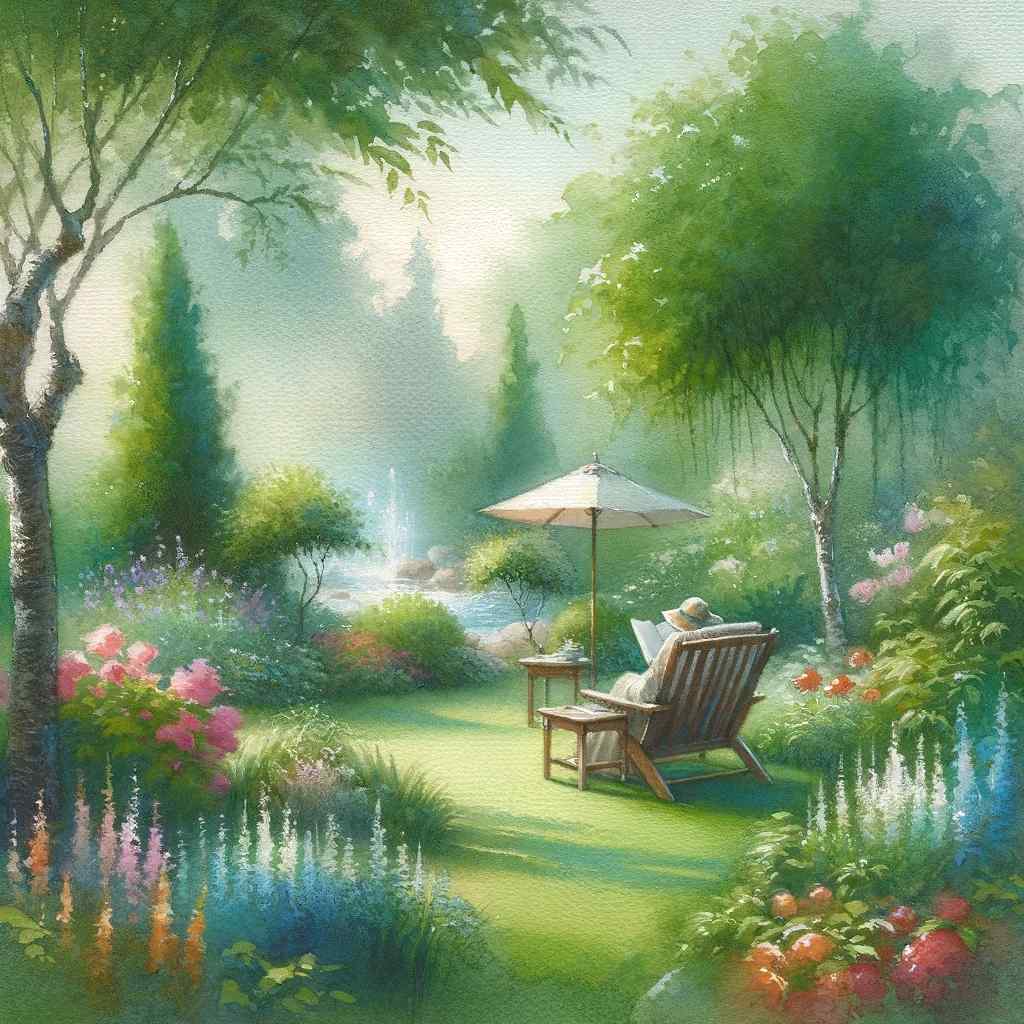
Analysis of the Structure
The poem presented as “Garden Diamante” is structured as a diamante poem, which is characterized by its diamond shape and specific format that contrasts two ideas or subjects. Here’s an analysis of its structure and why it fits the diamante form:
- Line 1 (Noun): The poem starts with a single noun, “Garden,” which sets the subject of the poem and introduces the first idea.
- Line 2 (Two Adjectives): This line describes the garden with two adjectives, “Lush, serene,” offering insight into its appearance and atmosphere.
- Line 3 (Three Gerunds): It progresses with three gerunds (verbs ending in -ing) “Growing, blooming, soothing,” which describe actions associated with the garden, giving a sense of dynamic activity.
- Line 4 (Four Nouns or a Transition): This line serves as the heart of the diamante, providing a transition between the first and second ideas. In this poem, “Sanctuary, oasis, haven, retreat” act as both descriptive elements of the garden and a bridge to the contrasting idea, emphasizing the garden as a place of refuge and peace.
- Line 5 (Three Gerunds): Mirroring line 3, this line shifts to actions related to the second idea or theme with “Reading, relaxing, dreaming,” suggesting activities that one might enjoy in the peaceful environment of a garden.
- Line 6 (Two Adjectives): Corresponding to line 2, this line offers two adjectives “Peaceful, tranquil” that describe the feeling or atmosphere of the garden as a place of solace.
- Line 7 (Noun): The poem concludes with a single noun, “Eden,” contrasting the starting noun and encapsulating the garden’s transformation into an idealized, peaceful retreat.
Inspiration Behind
I was inspired by the dual nature of gardens. On one hand, they are centers of constant activity and growth, with plants blooming and ecosystems thriving. On the other hand, for humans, they are places of quietude and contemplation, where one can escape the rush of life. The transition from “Sanctuary, oasis, haven, retreat” to “Eden” encapsulates this transition from the garden as a bustling natural space to a source of personal solace and inspiration. This poem is a reflection of that journey, from the outer world of nature to the inner realm of peace.
The Garden’s Lively Charm
In a garden so lively and green,
Not a single dull moment is seen.
With the flowers in jest,
Bees perform their best,
And the scene's like a lively dream.
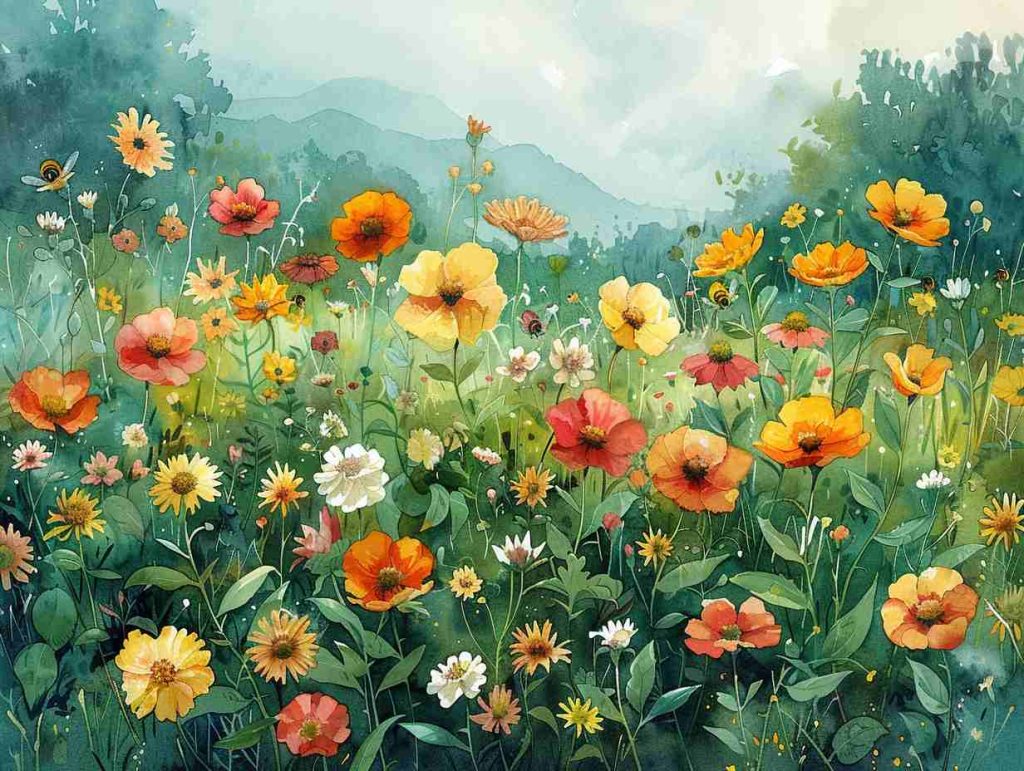
Meaning
It celebrates the vibrant and dynamic atmosphere of a garden. It paints a picture of a place where life is abundant and entertainment is found in the natural interactions of its inhabitants. The flowers and bees are personified, with the flowers teasing and the bees performing, suggesting a lively and engaging environment. The rhyme scheme and rhythm of the poem add a playful tone, emphasizing the garden’s role as a source of joy and wonder, likening it to a dream where the beauty and activity of nature provide endless delight.
Inspiration Behind
The inspiration came from watching the bustling activity in my own garden one sunny afternoon. It struck me how much drama and comedy unfold in such a space every day, with each creature playing its part in the garden’s ongoing story. The flowers swaying in the wind seemed to beckon the bees, who buzzed from bloom to bloom in a tireless dance. It felt like the garden was putting on a show just for me. This is an attempt to capture that lively charm and the whimsical perspective that sees a garden not just as a collection of plants and animals, but as a stage where nature’s most delightful performances take place.
End Words
The collection of Garden Poems and watercolor paintings presents the garden in diverse lights, capturing its essence as a place of growth, vitality, and peace. Through different poetic styles and visuals, it highlights the garden’s ability to inspire and offer solace, subtly reminding us of nature’s simple yet profound beauty and the quiet joy it brings.

